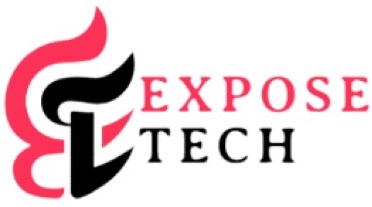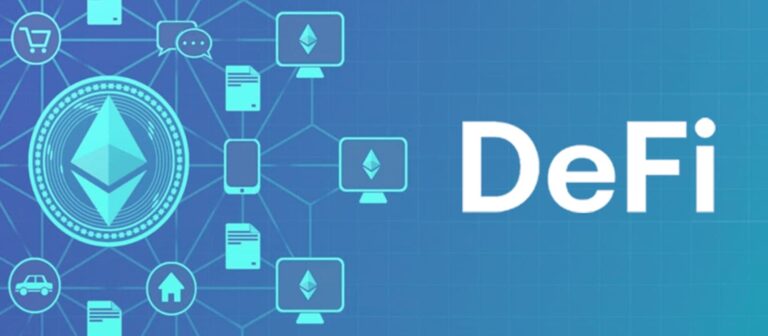Lately, finance has seen a big change called Decentralized Finance (DeFi). This shift owes much to the Ethereum blockchain, which has become the centre of DeFi activities. Its open-source, permissionless design means anyone can make and share clear code, letting users interact directly through computer programming without needing middlemen.
So, what exactly is DeFi, what are its core principles, and how did Ethereum contribute to this financial revolution? In this blog post, we will dive into the connection between Ethereum and the explosive growth of DeFi to gain a better understanding.
What is DeFi?
DeFi, which stands for decentralized finance, is like a whole new way of doing transactions on public blockchains like Ethereum. In DeFi, you can do most things that regular banks do, like making money with interest, borrowing, lending, getting insurance, trading assets, and more. The cool part is that DeFi happens super fast and does not need all that annoying paperwork or someone in the middle to make it work. Just like other crypto, DeFi is all around the world, connects people directly, lets you stay anonymous, and anyone can join in.
The big deal with DeFi is that it could completely change how conventional money systems work by making financial services easier to use, simpler, and more open for everyone. DeFi can cut fees, make things faster and safer, and bring financial services to people who usually do not have easy access, all by skipping the middlemen and using this cool blockchain technology.
Trade ETH to INR with ZebPay, India’s oldest and most trusted crypto exchange.
Ethereum DeFi Revolution
Ethereum is a blockchain platform that brought in the Smart contract concept. Smart contracts are like super-smart deals that are set up to run all by themselves. They kick into action automatically when certain conditions are met, all happening inside the Ethereum network. Now, Ethereum is a big deal in making DeFi work, and here is why:
1. Smart contracts:
Ethereum’s vital support for these smart contracts is key to why DeFi is growing. These contracts handle money transactions like lending and trading without needing regular middlemen. People feel safe because they know the code will do what it’s supposed to, making things safe and clear.
2. Liquidity pools:
Ethereum set up these things called liquidity pools, which were a big step towards having digital places where people could trade their crypto assets without a middleman and earn some extra.
3. Network effects:
Ethereum has a large community of developers and a strong network, which is why a bunch of DeFi innovations are happening here. It is like the go-to spot where all the cool new ideas for DeFi are being tried out.
Defi Solutions on Ethereum
Ethereum’s Smart contract feature is like giving developers a magic wand to create super-smart financial systems that run on autopilot. These systems do not need middlemen, making everything faster and more efficient.
One of the cool things happening on Ethereum is decentralized exchanges (DEXs). These are places where people can trade crypto directly, without going through traditional exchanges. This feature not only saves on fees but also gives users more control and makes the whole process transparent. Uniswap is a popular DEX on Ethereum where people can trade different Ethereum-based tokens easily, without the usual complicated rules.
Another feature of Ethereum is yield farming. It is like planting seeds in a digital garden and getting rewards in return. Ethereum Smart contracts handle all the tricks and strategies users can use to farm those rewards, making it easy for anyone to join in. Then there are stablecoins, digital versions of regular money, such as the US dollar. These stablecoins keep things steady in the crypto world, making it less risky to trade. Tether (USDT) is one of the big stablecoins on Ethereum, worth over $100 billion in total.
What Is the Future of Ethereum’s DeFi Ecosystem?
The Ethereum DeFi community is growing and evolving, especially with the launch of Ethereum 2.0, which brought in some big changes like moving from proof-of-work (PoW) consensus to proof-of-stake (PoS) and making things run smoother overall. This upgrade is a game-changer for Ethereum’s progress. Plus, there are more exciting upgrades on the way, like improving how fast transactions go through with layer two scaling solutions. All these improvements mean we can look forward to even more growth and cool innovation happening in the world of DeFi on Ethereum.
Conclusion
The growth of DeFi on Ethereum reflects how blockchain technology is changing the game. It’s a combination of cool new DeFi apps, the built-in features of the Ethereum network, and some smart moves from blockchain marketing experts that are pushing this forward. DeFi has the power to make financial services more open to everyone and make direct trades between peers easier.
But there are some hurdles on the road ahead. Things like the market going up and down, not knowing exactly what the regulations are, and cybersecurity issues can all slow things down. However, these challenges also bring opportunities for fresh ideas and improvements. In short, the future of DeFi on Ethereum looks promising, but it needs constant innovation, good marketing, and sensible regulations. To navigate this ever-changing space, it is vital to keep learning and understanding the risks and the chances to make the most of DeFi in the global financial world.
You can buy Ethereum (ETH) or other tokens, with ease on Zebpay.
Disclaimer: Crypto products and NFTs are unregulated and can be highly risky. There may be no regulatory recourse for any loss from such transactions. Each investor must do his/her own research or seek independent advice if necessary before initiating any transactions in crypto products and NFTs. The views, thoughts, and opinions expressed in the article belong solely to the author, and not to ZebPay or the author’s employer or other groups or individuals. ZebPay shall not be held liable for any acts or omissions, or losses incurred by the investors. ZebPay has not received any compensation in cash or kind for the above article and the article is provided “as is”, with no guarantee of completeness, accuracy, timeliness or of the results obtained from the use of this information.

